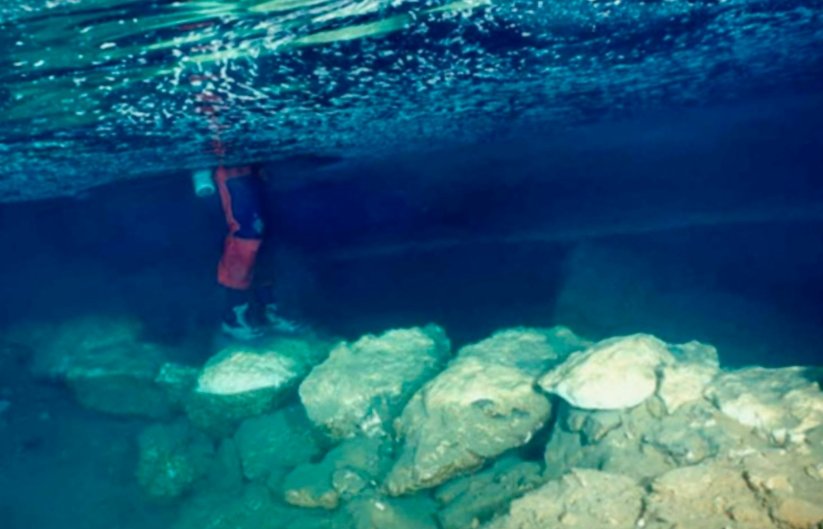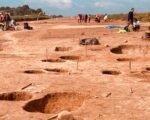In a stunning archaeological discovery, researchers have uncovered a submerged limestone bridge in Genovesa Cave on the island of Mallorca. This bridge, initially thought to be 3,500 years old, has now been dated to nearly 6,000 years ago, pushing back the timeline of human settlement on the island by over 2,000 years. The bridge, constructed without cement or mortar, spans a subterranean lake and provides new insights into the sophisticated activities of early settlers in the Mediterranean region.
The Discovery of the Submerged Bridge
In 2000, scientists exploring Genovesa Cave on Mallorca stumbled upon a man-made limestone bridge submerged in a subterranean lake. Initially, the bridge was estimated to be around 3,500 years old based on pottery found at the site. However, recent analysis has revealed that the bridge is much older, dating back nearly 6,000 years. This discovery has significant implications for our understanding of early human settlement in the Mediterranean.

The bridge measures 25 feet in length and is composed of large limestone blocks, some over four feet wide. The construction of the bridge, without the use of cement or mortar, indicates a high level of engineering skill. The bridge provided a dry path across the lake, facilitating access to an inner chamber of the cave, which is now also underwater. This chamber may have served various purposes, including as a refuge, a ritual site, or a storage area to protect food from the hot Mallorcan climate.
Implications for Human History
The discovery of the submerged bridge in Genovesa Cave has profound implications for our understanding of early human history. The presence of this bridge, along with other artifacts found in the cave, suggests that humans settled on Mallorca much earlier than previously believed. This pushes back the timeline of human settlement on the island by over 2,000 years, challenging previous assumptions about the history of human migration in the Mediterranean.
Researchers believe that the early settlers who built the bridge recognized the strategic importance of the cave’s water resources. The construction of the bridge indicates a sophisticated level of activity and planning, suggesting that these early settlers were capable of complex engineering projects. The discovery of the bridge also provides new insights into the daily lives and activities of these early settlers, including their use of the cave for shelter, rituals, and storage.
Future Research and Preservation
The discovery of the submerged bridge in Genovesa Cave has opened up new avenues for research and preservation. Archaeologists from the University of South Florida and other institutions are conducting further studies to uncover more details about the bridge and its significance. The artifacts found at the site, including pottery and remains of an extinct goat species, will be analyzed to gain a deeper understanding of the early settlers’ lives and activities.
The bridge and other artifacts from Genovesa Cave will be preserved and studied to provide valuable insights into early human history. The findings will be shared with the public through exhibitions and educational programs, allowing people to learn more about this fascinating period in history. The discovery of the submerged bridge in Mallorca is a testament to the importance of archaeological research and the rich history that lies beneath the surface.













